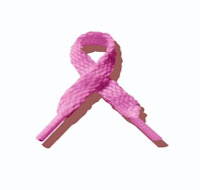Yesterday, the journal, Health Affairs,
published a study that investigated referral for profit in the context of advanced radiological imaging. Here is what they found:
ABSTRACT:
Using data from a large insurer in California, we identified the self-referral status of providers who billed for advanced imaging in 2004. Nearly 33 percent of providers who submitted bills for magnetic resonance imaging (MRI) scans, 22 percent of those who submitted bills for computed tomography (CT) scans, and 17 percent of those who submitted bills for positron-emission tomography (PET) scans were classified as “self-referral.” Among them, 61 percent of those who billed for MRI and 64 percent of those who billed for CT did not own the imaging equipment. Rather, they were involved in lease or payment-per-scan referral arrangements that might violate federal and state laws. [Health Affairs 26, no. 3 (2007): w415-w424 (published online 17 April 2007; 10.1377/hlthaff.26.3.w415)]
In other words, and put less politely, 60% of doctors were illegally billing for imaging studies. As you know, MRI and CT scans are expensive, often over $1000. The ability of a doctor to be paid for a test like this is just way to fishy for me. I wonder if the patients sent for theses images have the ignorant good fortune to hear, “Good news, your MRI was negative!” more than those patients whose doctors were not getting illegal kickbacks.
The proper use of advanced imaging is to rule in/out a diagnosis. The overuse of these images is rampant, as many people just order the image to “see what’s going on in there” as opposed to performing a thorough and telling clinical exam.
Another excerpt from the article:
“Under federal law, it is generally illegal for a physician to refer Medicare or Medicaid patients for designated health services in which the physician has a financial interest. Nearly half of the states have similar prohibitions that apply to the privately insured. These bans on self-referral were enacted during the early 1990s in response to several empirical studies that found that the financial incentives inherent in physician self-referral arrangements resulted in increased use of services and higher payments from third-party payers.”
Ok, so my question now becomes two-fold:
-
What is going to be done about this, because I’m sure there is a lot of needless expense in overuse of advanced imaging?
-
Why is this referral for profit ban NOT inclusive of Physical Therapy? Why is it ok for a doctor to profit from self-referrals to his PT, but not from an MRI?
I guess this is just another bit of evidence for why we should, as a society, increase our skepticism of the medical profession. They are, after all, human. Check out the WSJ Health Blog on this subject.





